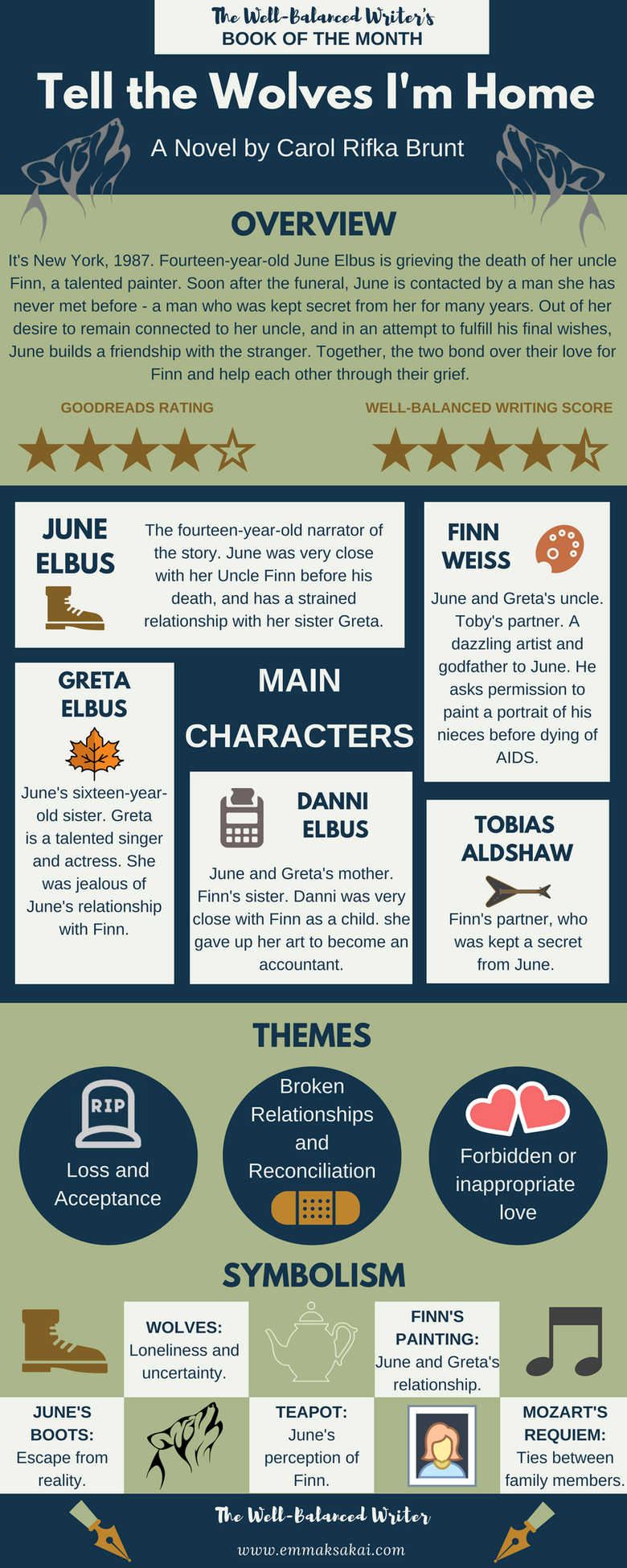This week:
Black Bird vol. 12
Boys Over Flowers vol. 10
Dawn of the Arcana vol. 7
Demon Love Spell vol. 6
The Demon Prince of Momochi House vol. 4
Dengeki Daisy vol. 3
A Devil and Her Love Song vol. 2
Although shoujo has been around in Japan about as long as manga in its current form has, it took a long time to find an audience in the US.
Actually, no. Scratch that. The audience was always here. It took a long time to for it to become accessible to its audience here.
A long, long time ago, in the strange era knowns as the “80s and 90s”, manga was first starting to come to the US, but it was a far cry from what we know today. The industry was controlled by comic books guys and intended to appeal to other comic book guys, so most of what came over was what was already in their wheelhouse: seinen and shonen. And while they imported many classics in that time, such as Maison Ikkoku, Akira, and Nausicaa of the Valley of the Wind, attitudes toward shoujo ranged from “inconsequential fluff” to “unmarketable.” It wasn’t until the late 90’s, when Sailor Moon became a modest success, that companies started considering teenage girls a viable audience. And when Tokyopop, for all the things they did wrong, embraced that audience, they ushered in a manga boom that would change the face of the US manga industry forever.
The true tragedy is that the 70’s, 80’s, and 90’s were a wonderful time for shoujo manga. While many series coming out now fall under the relatively safe genres of school romance and supernatural romance, there was a ton of diversity in those eras. The Year 24 group were revolutionizing the demographic with stories like The Rose of Versailles, The Heart of Thomas, and To Terra. Cross-dressing and BL stories examined boundaries between genders. The genre was bursting with character-driven fantasy, science fiction, historical fiction, and pretty much every genre under the sun. Above all else, women were creating media for girls – something all too rare in the US at the time. Some of it made its way to US shores after the fact – Red River and Basara still line my bookshelves – but many others never made it over.
Nowadays? Most of the series coming out are contemporary. I don’t blame companies for not licensing a glut of older titles, since the old-fashioned artwork and storytelling can be a tough sell that really only appeal to genre aficionados. However, as young female creators who grew up reading manga come into their own, I can’t help but wonder how things would have been different if shoujo manga had been taken seriously from the start. Series like Revolutionary Girl Utena and Sailor Moon are visible influences in many pieces of media today, largely because they offered a greater diversity in heroines than US offerings did back in the late 90’s and early 00’s. How would things have turned out differently if we had that diversity even earlier? How many more women would have been inspired and empowered to create, had their cultural influence been taken seriously by the men keeping the gate shut?
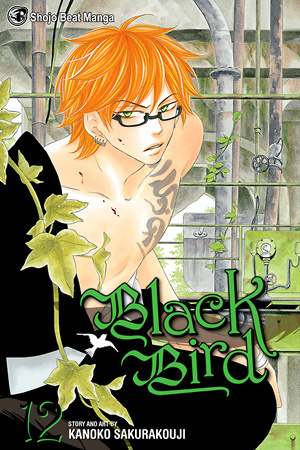
Black Bird vol. 12
Sho’s manipulations have cast the demon world into chaos, and Kyo must leave the tengu village to help save the Kuzunoha clan from slaughter. But giving aid to one of his few remaining allies means he must leave Misao vulnerable to attack.
Kyo’s grandfather is able to cast a powerful shield over the tengu mansion, but while it keeps anyone from getting in, it also traps those who are inside. How can Misao justify locking herself away when Sho begins to menace the village’s most helpless members? (summary by Viz)
1 point
As the succession battle between Kyo and Sho continues to build and the plot ramps up, Kyo and Misao spend actual time together, leading to fewer points. The time they do spend together is quite sweet – affirmations of love, supportive conversations, and intimate contact. At one point, Misao even pushes Kyo down on the futon, but gets embarrassed until Kyo encourages her to continue. It was a sweet moment of intimacy, and I’m a little disappointed it “faded to black” much faster than most of the sex scenes in the series.
We also get some development of Ayame and Sagami’s relationship, which I suspect is Sakurakoji’s ideal “partnership” – while they’re very much in love, they have a strong understanding that each other’s number one priority in life is protecting Kyo and Misao. Sagami goes out and fights and serves Kyo, while Ayame stays in the tengu village and supports Misao. It retains the typical gender roles – man in public as a warrior, woman at home as support – but is supposedly “equal”. It’s a pretty stereotypically gendered picture of a partnership, the sort of thing that is fine in isolation but is part of a pattern of sexism regardless. Tengu society appears to be highly gendered, as the women seem to be universally playing support roles at home. I strongly suspect they’re meant to be the model for Kyo and Misao’s relationship.
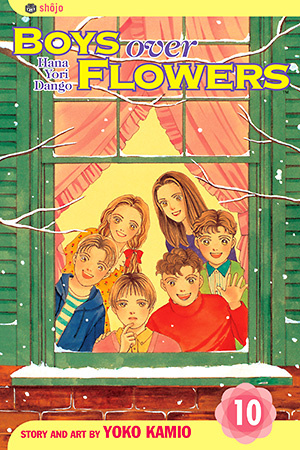
Boys Over Flowers vol. 10
Rich boy Tsukasa returns to Japan after he discovers the true identity of Tsukushi’s “Kinsan.” Tsukushi herself is having trouble accepting his identity. Then Kinsan invites Tsukushi to a swank party where they bump into Tsukasa, who causes a major scene when Kinsan declares his intentions toward Tsukushi! Still desperate for money, Tsukushi goes to Tsukasa who comes up with a plan that everyone can benefit from. That is, if Tsukushi can win a beauty contest…! (summary by Viz)
7 points
I regret to inform you that Tsukasa Domyoji is back on his bullshit.
He and Tsukushi are not dating. They have never been dating. He told her he likes her once, and then kissed her a couple times. She has never had any obligation to be exclusive with him or to avoid relationships with other men. He has decided she’s his without giving her any say in the matter. So when Kinsan publicly announces that he wants to marry her, Domyoji storming the stage with homicidal intent is utterly out of line on multiple levels. Possessiveness to the point of violence is abusive, not allowing Tsukushi the autonomy of picking her own partner is abusive, and his level of jealousy is abusive as well.
Does Domyoji suffer any consequences for it? Of course not! His fit causes the news organizations to stalk Tsukushi and her family, and she only blames Kinsan (who, to be fair, is equally at fault). Domyoji, meanwhile, gets to look like the hero by forcing her to enter a beauty contest to make her more “worthy of him” in exchange for enough cash to pay off her father’s loan sharks. He’s the one who’s not worthy of her.
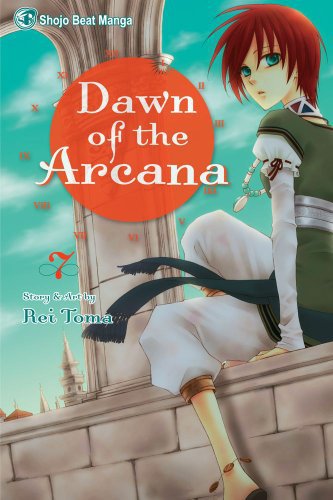
Dawn of the Arcana vol. 7
Princess Nakaba of Senan and Prince Caesar of Belquat only married each other for the sake of peace between their two warring countries, yet the two find themselves drawn to each other even as political forces threaten to tear their world apart. After a murder in the family, Caesar and Nakaba seek refuge in Senan, Nakaba’s homeland. The couple is far from welcome, however, as demonstrated by Nakaba’s cousin’s cruelty. Worse yet, the king of Senan sends them packing…! (summary by Viz)
0 points
This volume, we get to meet Nakaba’s oh-so-delightful family that imprisoned her alone for most of her life. They are, as expected, a truly delightful bunch. The real winner is her cousin, who apparently regarded verbally abusing her one of his favorite past times. He can’t stand that she now actually reacts to his words, instead of the unresponsive doll she once was. Having people around that treat her well enough that Nakaba can even allow herself to feel instead of shutting down, let alone show them, is a major step. Maybe someday she’ll be able to stand up to her cousin, but she’s not quite there yet in her recovery.
Other signs of her abuse are everywhere, and Caesar accidentally stumbles over quite a few of them. He asks about the tower separate from the rest of the castle without thinking of Nakaba’s years of isolation there, and comments on how strange it is that she would get lost in her own castle… which she was never allowed to explore freely. Caesar’s insenstivity is cringeworthy, if understandable. With any luck, he’ll come to realize what being partnered with an abuse victim really means, now that he’s seeing how Nakaba was treated and the conditions she was forced to survive.
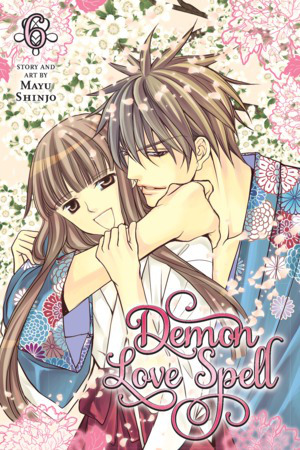
Demon Love Spell vol. 6
Shrine maiden Miko has sealed the powers of the sexy incubus Kagura, who has vowed to protect her. Kagura has been losing his powers ever since Miko’s father cast a spell to prevent Kagura and Miko from making love. The spell must be broken for Kagura to survive, but will Miko’s father relent? (summary by Viz)
13 points
And thus Demon Love Spell draws to a typical smutty shoujo manga close. They have sex, they get married, they have an annoyingly precocious son who the sexually aggressive father makes inappropriate comments in front of. And now that I’m through it… it’s hard to muster up the energy to say much else. While Kagura rarely dipped into psychological, emotional, or physical abuse, his constant pushing Miko for sex was exhausting. Even though Miko has acknowledged she wants to have sex, he continues to try to force her to perform in ways she’s not comfortable with, such as doing a strip tease on demand. It does seem odd that she’s uncomfortable with him seeing her naked body now that she’s consented, but that’s shoujo romantic comedy for you. The fact that he pushes her into it is what’s the problem. He also declares that she’ll become his wife, and when she asks if that was a proposal, he only replies, “I don’t have to ask you! It’s not like you have a choice.” That’s not romantic, that’s not cute, that’s not “just his way” – it’s controlling and abuse.
I’m done, I’m done, I’m so very done.
Series total: 84 points
- average 14 points per volume
- 10 under tropes
- 5 under physical abuse
- 52 under sexual abuse
- 16 under psychological abuse
I’M FREEEEEEEE.
Demon Love Spell has easily been the least enjoyable manga I’ve had to slog through for this column. Black Bird has its moments and Boys Over Flowers is a page-turner if nothing else, but I found nothing to look forward in Demon Love Spell. The art is stiff and unattractive, Kagura and Miko are desperately boring, and there’s little plot to speak of. It’s all trope, without an ounce of authenticity – everything I hate about shoujo manga with none of the things I love.
I find Mayu Shinjo’s entire view of gender relations to be utterly repellant – men pushing women sexually until the relent, and the woman finally giving in because she’s “in love”. Obtaining consent is an important stage in a healthy relationship, and Shinjo treats it as a mere obstacle for the protagonist push past. It’s odd, because the heroine consenting to sex is a major plot point in both her works that I’ve read, but it feels more like “giving in” than truly being ready for a sexual relationship. Meanwhile, other forms of sexual contact – kissing, groping, pinning against the wall, and so on – are treated as inconsequential and unworthy of that bond of trust, even if the girls feel violated by their touching. Men are naturally horny and women must be seduced, whether they want to be or not.
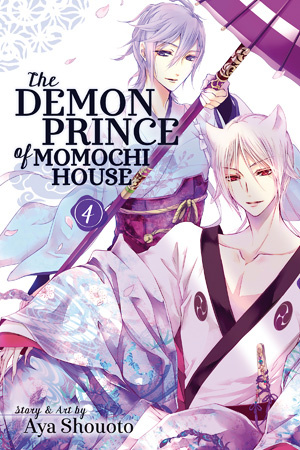
The Demon Prince of Momochi House vol. 4
Himari Momochi inherits Momochi House, an estate that exists on the barrier between the human and spiritual realms. All knowledge of Aoi’s existence has been expunged from the outside world, but there is one who still faintly remembers him—Aoi’s childhood friend Hayato Hidaka. Hayato seeks out Himari, but it is said anyone who becomes involved with him will be cursed! (summary by Viz)
0 points
The Demon Prince of Momochi House, on the other hand, is like sipping at a cup of hot, sweet tea every week – warm and comforting. It’s not primarily a romance at this stage, focusing more on episodic stories having to do with the ayakashi and yokai of Momochi House, with a slow-burn subplot about Aoi’s past and future as the Nue. His relationship with Himari is also a slow burn, in the most delightful way. As they learn more about each other, their relationship deepens. The two are gentle souls thrown together by fate, but also driven to help each other. The two have started recognizing their attraction to each other, and although there have been no obvious romantic overtures, they are growing more comfortable together. Aoi has started flirting with Himari, a welcome shift away from his childlike demeanor, and Himari herself is growing more comfortable with touch. It’s sweet, watching them grow closer emotionally and physically, and preferred sort of romance story: starting as friends, and realizing their mutual attraction and chemistry over time.
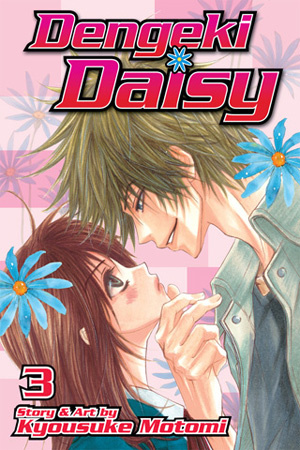
Dengeki Daisy vol. 3
Teru decides to move out of Kurosaki’s apartment, but she wonders if Kurosaki is actually relieved that she’s leaving. As she settles in at her new place, trouble comes knocking when an old business acquaintance of her brother’s appears… (summary by Viz)
12 points
There’s a lot I really like about Dengeki Daisy, honest. Teru is a pretty fun heroine, especially now that she has a cool lady mentor figure in Riko, another one of her brother’s old friends. The comedy can actually pretty funny, and she and Kurosaki have a fun give-and-take a lot of the time, so it doesn’t feel so much like abuse as just an antagonistic relationship. The main plot relating to her brother’s programming work is intriguing as little bits of information come in drips and drabs.
But man, does Motomi overdo it with Kurosaki’s “rough around the edges” schtick. At times, he shoots past rude and antagonistic straight into abusive. There are times he hits Teru, and though it’s played up as slapstick, it crosses a line, as does his comments about her body – specifically her small breasts – and the way he berates her. Plus we still have the major issues of the age difference, and the one-sidedness of their relationship… Bleh. To be honest, the series still has the potential to win me over, but it’s an uphill battle.
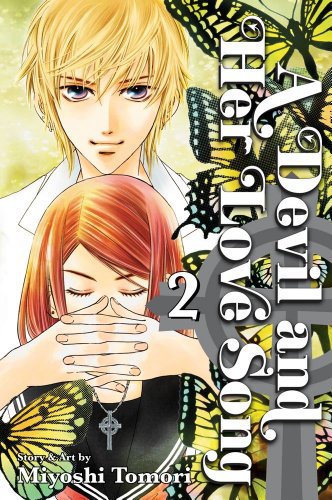
A Devil and Her Love Song vol. 2
Maria’s bold attitude may be exactly what she needs when she inspires an unlikely ally to come to her defense. And when she’s given the task to lead her class in a choral competition, she’s going to need all the gumption she can muster! (summary by Viz)
3 points
So far, A Devil and Her Love Song is focusing on bullying, not romance, but it seems to be setting up a love triangle between Yusuke and Shin, so both of them acting in abusive ways garners the series points so far.
Yusuke is an interesting foil to Maria. While she and Shin to be much more on the same page, Yusuke is devoted to making things around him “lovely” and pleasant. This attitude contrasts pretty strongly with Maria’s blunt nature, and while she spends the first volume trying to follow his advice, she decides to go her own way after all. I appreciate this direction for the story – I was concerned it was going to turn into a makeover story about smoothing out Maria’s rough edges, so I’m happy to see her stay true to herself. However, when she rejects Yusuke, he turns cruel – joining in with her bullies as his internal narration says, “I’m through trying to be nice to her. I’ll break her, even if I hurt her. Until this beautiful devil shows me her true colors.” It’s an odd, even hypocritical turn for a guy who himself never shows his true colors. His strategy also seems full of holes, as treating someone cruelly doesn’t seem like the best strategy to get them to show their full colors. It’s pretty uncomfortable, as if the broken Maria would somehow be more authentic than the face Maria shows to the world. There’s so much I like about the first two books, but that one isolated moment left an unpleasant aftertaste.
Next week:
Black Bird vol. 13
Boys Over Flowers vol. 11
Dawn of the Arcana vol. 8
The Demon Prince of Momochi House vol. 5
Dengeki Daisy vol. 4
A Devil and Her Love Song vol. 3
